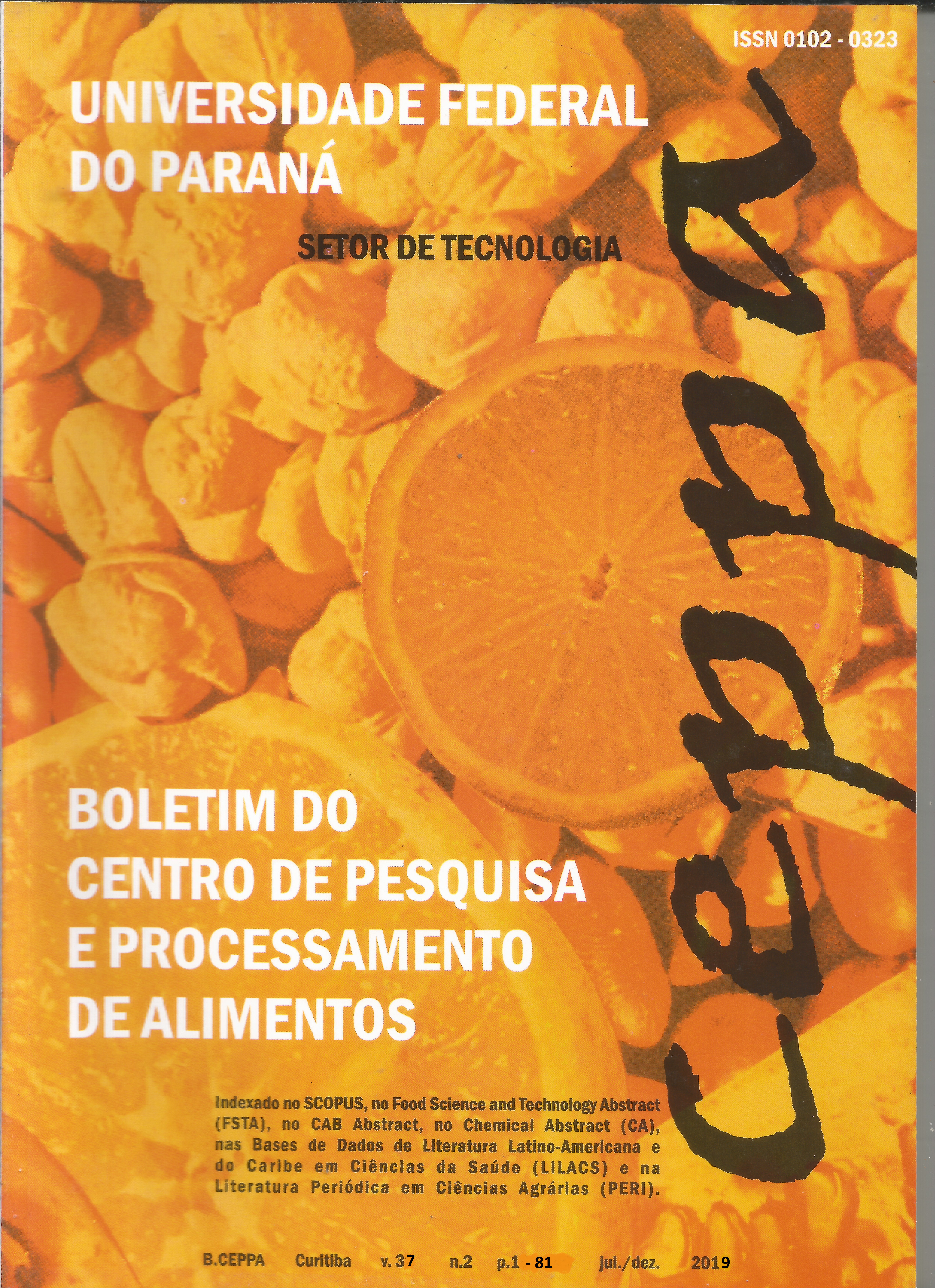CHEMICAL, MICROBIOLOGY AND SENSORIAL COMPOSITION OF POTATO GNOCCHI WITH THE INCLUSION OF DEHYDRATED MIX OF TILAPIA AND TUNA
DOI:
https://doi.org/10.5380/bceppa.v37i2.75044Palavras-chave:
FILLETING RESIDUE, NUTRITIONAL VALUE, Oreochromis niloticusResumo
Fish has nutritional characteristics that contribute to a healthy diet, however, its consumption in Brazil and in the world is still insufficient. During its processing part of the biomass is discarded, which requires alternatives to take advantage of this raw material, and a way to achieve this goal is to elaborate the dehydrated mix and include in products commonly consumed, but with low nutritional value. Thus, the objective of this study was to evaluate the sensory characteristics, chemical and microbiological composition of potato gnocchi with inclusion of a tilapia (70%) and tuna (30%) dehydrated mix. Four types of potato gnocchi were prepared with the inclusion of this mix, 0%, 10%, 20% and 30%. The inclusion of the mix did not influence the average values of crude protein (13.35%) and carbohydrates (48.87%). However, the ash content was higher (P <0.05) for the higher inclusion levels and the lipid content was higher in the gnocchi with fish mix. The inclusion of different levels of the dehydrated fish mix in the gnocchi did not interfere in the aroma, texture, taste, general impression and purchase intention. Only the color of the gnocchi was affected by the inclusion of the mix. It is concluded that the addition of the dehydrated tilapia mix with tuna improved the mineral content and quality lipids of the potato gnocchi and that the inclusion of 30% is acceptable, since the consumers did not identify differences in relation to the gnocchi without the mix of fish.
O que você quer fazer ?Novo correiocópia deDownloads
Publicado
Como Citar
Edição
Seção
Licença
Copyright for articles published in this magazine belongs to the author, with first publication rights for the magazine. By virtue of appearing in this public access magazine, the articles are free to use, with their own attributions, in educational and non-commercial applications.


